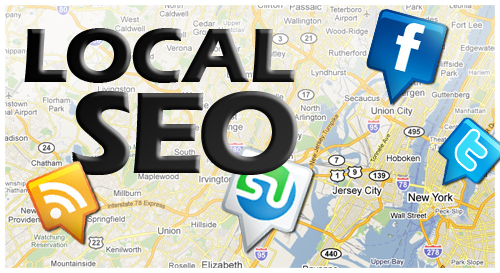
Author: Jayson DeMers
If you own a local business, you already know how important it is to rank in local search results. Now that the internet has become the primary source consumers turn to for local business information, not showing up in local search is tantamount to professional suicide.
This article will evaluate six important local SEO statistics that should shape your priorities when it comes to local search. For each statistic, I’ve also included an actionable step or steps you can take, as well as resources for further investigation.
Google’s research into local search behavior reveals that local searchers are poised to take action. According to their findings, “50% of consumers who conducted a local search on their smartphone visited a store within a day, and 34% who searched on computer/tablet did the same.” This means ranking in local search has a direct impact on in-store traffic.
Here are a few tips to make sure you’re ranking for local search terms:
- Get your business listed on Google My Business, and make sure your profile is complete.
- Make sure your NAP (name, address, phone number) is consistent across all channels. This includes your website, social media profiles, review sites and directory listings.
- Use local business schema markup so Google can identify and show your physical location.
- Use local keywords in your URLs, heading tags, title tags and content, where appropriate.
2. More Than 60% Of Consumers Have Used Local Information In Ads
In the same study referenced above, Google found that consumers have a clear preference when it comes to having ads customized to their surroundings. They found that:
- 67% of smartphone users want ads customized via city and ZIP code, and 61% want ads customized to their immediate surroundings.
- 61% use the address or phone number in the ad.
- 68% use the “Get Directions” or “Call” buttons.
When targeting your ads for local consumers, be sure to target your ads by location and to use location extensions. AdWords pulls your contact information from your Google My Business settings, so make sure it’s set up the way you want it to appear in your ads.
3. 88% Of Consumers Trust Online Reviews As Much As Personal Recommendations
Local businesses should be aware of the importance of positive online reviews, as highlighted in this stat from BrightLocal’s 2014 Local Consumer Review Survey. Increasingly, consumers are turning to Google to get recommendations and referrals for local businesses.
Some of the top review sites I recommend for local businesses include:
A great place to start when deciding where to list your business is to simply search for your business name, as well as for keywords you think your prospects may be searching for. See which review sites are displayed most prominently for these searches, and get to work.
4. Business Address/Location Is The Primary Piece Of Information Sought By Local Searchers
We’ve already talked about the importance of using local information in your ads; however, it’s just as important to make sure you’re including key contact and location info on your website and social media profiles.
According to research by comScore, Neustar Localeze and agency 15 Miles, address and location are the primary pieces of information sought by local searchers. Here are some of the other types of info searchers are looking for:
- Businesses by category (In other words, searchers are looking for a particular type of business but haven’t yet decided which one to patronize.)
- Phone number
- Products or services (Again, they don’t have a particular business in mind, they’re searching for a specific product or service.)
- Hours of operation
- Driving directions
- Coupons and special offers
- Ratings and reviews
Given the desires of local searchers, it’s important to keep your mobile content concise and actionable. Don’t overwhelm your mobile visitors with copious amounts of information; instead, clearly provide the basic info outlined above, and provide links to additional content as needed.

